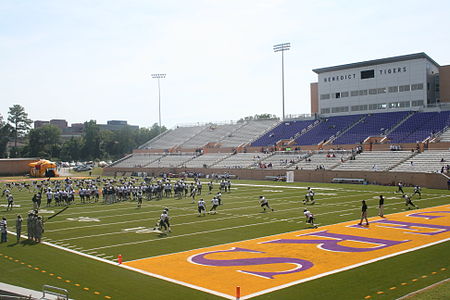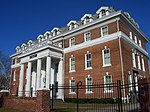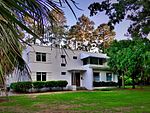Charlie W. Johnson Stadium
2006 establishments in South CarolinaAmerican football venues in South CarolinaBenedict Tigers footballBuildings and structures in Columbia, South CarolinaCollege football venues ... and 6 more
Columbia, South Carolina building and structure stubsSouth Carolina sport stubsSouthern United States sports venue stubsSports in Columbia, South CarolinaSports venues completed in 2006Sports venues in Richland County, South Carolina

Charlie W. Johnson Stadium is a stadium in Columbia, South Carolina. It is primarily used for American football, and is the home field of the Benedict College. The stadium has also been host of the South Carolina High School League's Class 1A football state championship games since 2010 and was also the host of the Class 2A games from 2011 to 2013. The stadium holds 11,000 people; it opened in 2006. It underwent renovations in the summer of 2019, with new field turn, new scoreboard (25 feet by 43 feet), landscaping, new roofs on field house and press box, upgraded President's Suite level.
Excerpt from the Wikipedia article Charlie W. Johnson Stadium (License: CC BY-SA 3.0, Authors, Images).Charlie W. Johnson Stadium
Edgewood Avenue, Columbia
Geographical coordinates (GPS) Address External links Nearby Places Show on map
Geographical coordinates (GPS)
| Latitude | Longitude |
|---|---|
| N 34.018238 ° | E -81.010646 ° |
Address
Charlie W. Johnson Stadium
Edgewood Avenue
29204 Columbia
South Carolina, United States
Open on Google Maps








